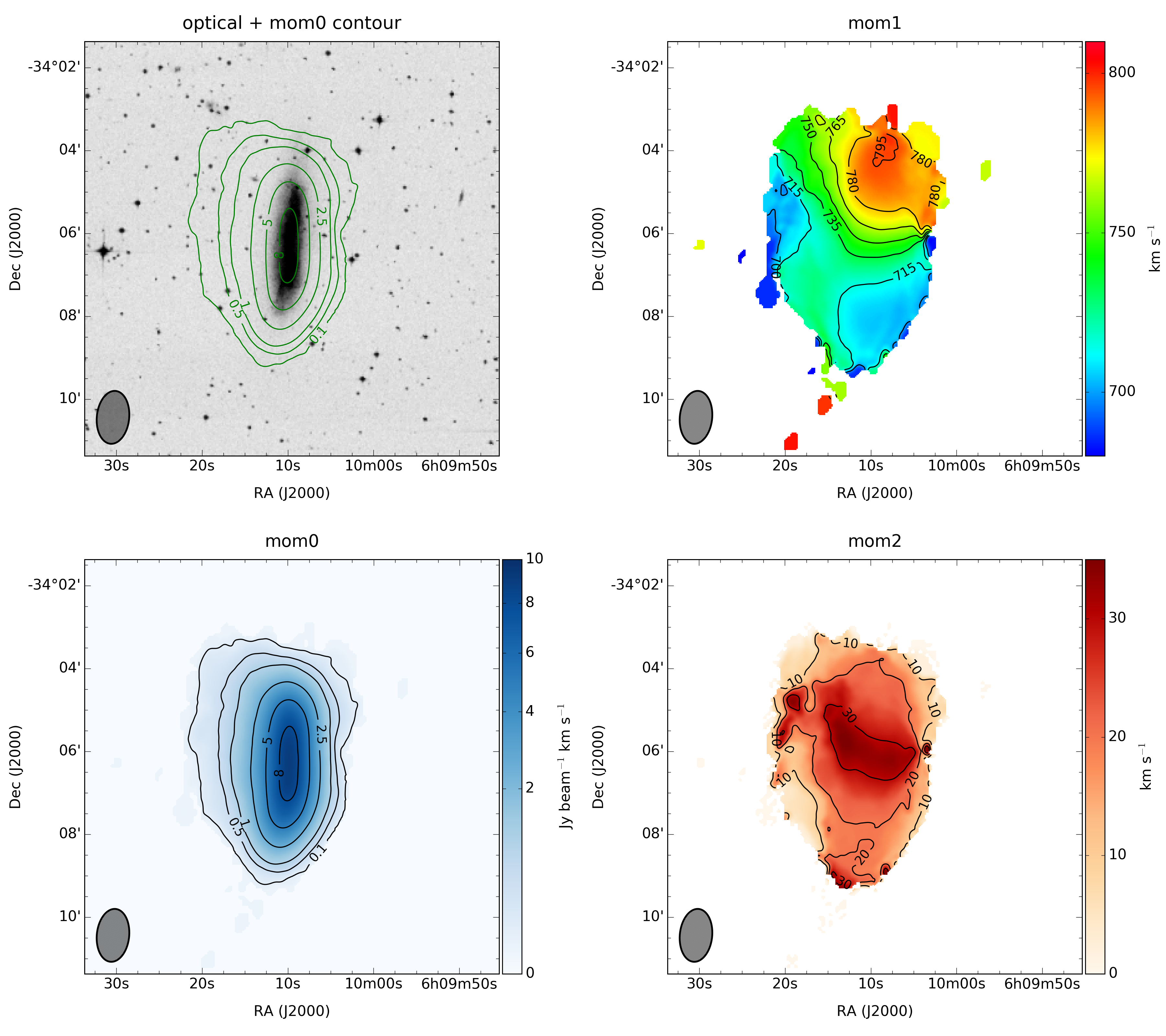NGC 2188

NGC 2188 (HIPASS J0610-34)
is a Magellanic barred spiral galaxy seen nearly edge-on, at a
Tully-Fisher (TF) distance of 7.4 Mpc (Karachentsev et al. 2013). Its nearest
neighbours are AM 0605-341 (HIPASS J0607-34) and ESO 364-G?029 (HIPASS
J0605-33) at projected distances of 35.6 arcmin and 82.5 arcmin, respectively
(see Kirby et
al. 2012). Our ATCA data of NGC 2188 show an extended, but rather asymmetric
HI distribution and somewhat peculiar velocity field. Most notably, there is
significant extraplanar HI emission extending towards the east, while the
western side of NGC 2188 appears compressed, resembling discs affected by ram
pressure forces. This asymmetry is also, to a lesser degree, evident in the
stellar disc. The mean HI velocity fields appears to show two components, a
rotating disc plus peculiar motions associated with the extraplanar gas. These
features were also noticed by Domgörgen et al. (1996) who analyse
high-resolution VLA HI and ESO Hα images. Kirby et al. (2012) model the
ATCA HI velocity fields of NGC 2188's two neighbours. They suggest that tidal
interactions between NGC 2188 and AM 0605-341, which are separated by ~77 kpc,
may be responsible for the peculiar features. Using our ATCA HI data we
measure FHI = 34.3 Jy km/s, in agreement with HIPASS (Koribalski
et al. 2004), and derive MHI = 4.4 × 108
M☉. For comparison, Domgörgen et al. (1996) measure
FHI = 20.4 ± 0.6 Jy km/s, losing much of the diffuse HI
emission. In a follow-up study Domgörgen & Dettmar (1997) find
spectacular filaments of ionised gas extending several hundred parsecs
perpendicular to the plane of the galaxy, mostly from the massive HII region
in the southern (approaching) part of NGC 2188. They note that at least 24%
of the Hα emitting is gas is diffuse. Deep H-band images are presented
by Young et al. (2014).
Reference:
Koribalski et al. 2018
* LVHIS database
* LVHIS homepage
* next